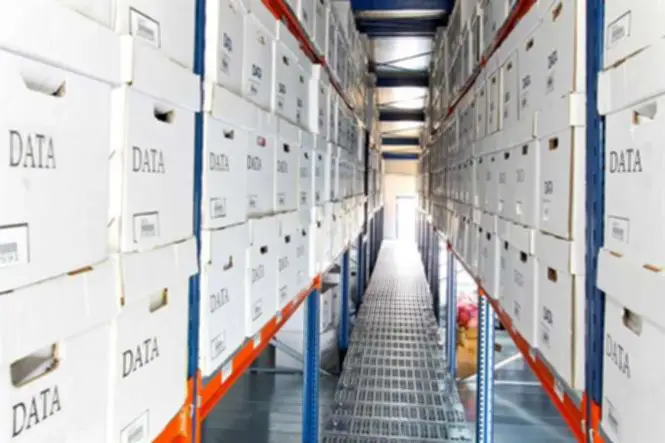Depending in your setup, you might need autocaling mechanisms that go into motion when containers use too many resources on a machine. In this case, containers that use extra resources on a machine could be handled by autoscaling. You should be alerted when the autoscaling mechanism fails to discover a Container Orchestration appropriate machine for the container, or if useful resource utilization is extreme, which might indicate an error or cyber attack. It’s essential to grasp how container community traffic flows, and monitor it accordingly.
Useful Resource Administration And Autoscaling
This step is required so the containers can communicate with one another and with other networks beyond the cluster. What complicates this course of is that the containers rapidly begin and terminate, and one mistake may lead to a security exposure. In the absence of automation tools, teams must configure networking id for all purposes and load balancing components and arrange security features for ingress and egress of visitors. Container orchestration platforms enable businesses to scale containerized purposes in response to fluctuating demand — without human intervention or trying to foretell utility load.
What Is Container Orchestration?
The scheduler ensures that the distribution of workloads remains optimized for the cluster’s current state and useful resource configuration. The Kubernetes API server performs a pivotal position, exposing the cluster’s capabilities via a RESTful interface. It processes requests, validates them, and updates the state of the cluster based on instructions obtained. This mechanism allows for dynamic configuration and management of workloads and sources. Implementing container orchestration is a complicated process requiring most accountability and transparency across stakeholders. If the tradition of the group lacks these attributes, even the best-implemented container orchestration resolution is not going to yield the specified outcomes.
Acquire And Construct Pipeline Part
Recently, Webb Brown, CEO of Kubecost, a Kubernetes cost monitoring agency, pointed out that many teams usually start with a low 20% value efficiency. However, merely configuring an utility isn’t merely a “one and done” task; it sometimes needs a devoted DevOps staff willing to regularly scan Kubernetes clusters and ensure their proper configuration. This course of includes validating pod resource limits and safety policies to ensure a clean operation. Kubernetes directors additionally need to evaluate, choose, set up, and manage myriad third-party plug-ins or extensions from a vast and dizzying array of choices. You can integrate Middleware with any (open source & paid) container orchestration tool and use its Infrastructure monitoring capabilities to give you full analytics about your application’s well being and status.

Efficiently managing resources (CPU, reminiscence, etc.) and scaling applications based on demand is crucial for optimizing useful resource utilization and making certain application performance. Vital for digital enterprises experiencing fluctuating demand, orchestrators within the container ecosystem allow companies to scale their purposes with out compromising performance. The container ecosystem as an entire refines previous capacities for scaling and resource availability. Offering a substitute for traditional digital machines, containers share the underlying OS kernel and eat fewer resources. This effectivity interprets into decreased operational prices and improved utilization of computing assets, a key benefit for enterprises managing large-scale functions. The scheduler in Kubernetes assigns workloads to employee nodes based mostly on resource availability and different constraints, such as high quality of service and affinity guidelines.
Kubernetes offers the mechanisms and the environment for organizations to deploy purposes and companies to prospects quick. Kubernetes brings vital agility, automation, and optimization to the DevOps surroundings. It also signifies that groups don’t need to construct resiliency and scalability into the application – they will belief that Kubernetes providers will care for that for them. Google’s control group(cgroup), built-in into the Linux kernel in 2007, brought fine-grained useful resource management to Linux-based containers. This innovation enabled administrators to handle and isolate useful resource usage among groups of processes, enhancing predictability and efficiency in containerized environments.
Container orchestration addresses these challenges by automating deployment, scaling, and administration processes, making certain purposes run seamlessly from development by way of to production. Dev teams use it to rapidly deploy and orchestrate applications throughout a cluster of machines, automating many tasks that may otherwise be time-consuming and error-prone. Container orchestration allows organizations to streamline the life cycle process and manage it at scale. Developers can even automate lots of the tasks required to deploy and scale containerized purposes by way of using container orchestration tools. Managed companies, similar to AWS ECS, AWS EKS, and GKE, scale back the operational burden of organising and managing an orchestration answer.
- With orchestrators, DevOps groups can wield the total potential of containerization, aligning it with their business aims.
- An orchestrator usually handles all aspects of network management, including load balancing containers.
- One of the primary choices your group should make is where and the means to deploy your Kubernetes structure.
- Within the file are particulars like container picture locations, networking, security measures, and resource requirements.
Container orchestration streamlines the method of deploying, scaling, configuring, networking, and securing containers, releasing up engineers to give attention to different important duties. Orchestration also helps ensure the high availability of containerized applications by routinely detecting and responding to container failures and outages. Network security ensures that the communication between containers and the outside world is safe and controlled. In a containerized surroundings, where multiple containers often share the identical host, community safety is essential to forestall unauthorized access and data breaches.

For example, imagine that one of your functions has turn into sluggish to respond to requests. To gain an understanding of the issue, you might use kubectl to listing the appliance’s Pods, then inspect Pod logs and error codes to analyze the status of every Pod. Going deeper, you explore resource utilization metrics for the node that hosted the Pod, then uncover that the node’s CPU was maxed out. You then determine that the Pod most likely crashed as a result of its host node lacked sufficient CPU. Finally, you conclude that Kubernetes couldn’t reschedule the Pod on a unique node because you deployed the Pod utilizing a DaemonSet, which required it to run on that specific node. While Docker and Kubernetes introduce new challenges, understanding and addressing these obstacles is crucial for leveraging the total potential of containerization and orchestration.
With a Container orchestration platform in place, you don’t should manage load balancing and service discovery of every service manually; the platform does it for you. The first set of tools is helpful when you expertise a problem with a slim scope and must hint its root source. But for advanced points whose scope and root trigger are by no means obvious from the surface, a holistic observability solution is normally your finest wager for getting to the basis of the issue.

Earlier this yr RedHat surveyed 600 DevOps and security professionals about the state of K8s security. They discovered that 67% of respondents have skilled delays or slowdowns in software deployment due to safety considerations. In addition, simply over a 3rd of respondents reported experiencing income loss or customer attrition because of a container and Kubernetes security incident. Overprovisioning resources occurs when an enterprise fails to fastidiously monitor spending and loses management over the costs concerned. In the CNCF survey, 24% of respondents didn’t monitor Kubernetes spending in any respect, whereas 44% relied on month-to-month estimates.
Kubernetes — also referred to as K8s — might be the best-known and most popular open supply container orchestration device. Kubernetes manages the complete life cycle of a container and has a spread of managed services to help teams gain all the benefits with out complexity. Devs like it for its flexibility, vendor-agnostic features, steady version releases, and the open source neighborhood built around it.
Kubernetes customers ought to be conscious that adding components to the Kubernetes setting increases the overall assault surface, including the publicity of secrets. One such part, the Kubernetes Dashboard, presents a web-based interface for managing and visualizing the cluster. Improper configuration or safety vulnerabilities in the Dashboard can introduce risks, particularly when it’s accessible on the public internet with out strong authentication and authorization measures. Unauthorized entry to the Dashboard grants attackers the flexibility to view sensitive info, manipulate sources, and probably acquire access to saved secrets and techniques within the cluster.
For that cause, it’s a great match for DevOps teams and may be simply integrated into CI/CD workflows. An orchestrator automates scheduling by overseeing resources, assigning pods to particular nodes, and serving to to ensure that sources are used effectively in the cluster. Also, integrating the Kubernetes platform with DevOps instruments and CI/CD pipelines require the teams to alter the present toolchain and pipelines to move the code with proper safety and high quality gates. AKS can mechanically add or take away nodes to clusters in response to fluctuations in demand.
This article covers the working, significance, challenges and prime instruments of container orchestration in detail. From there, the configuration files are handed over to the container orchestration tool, which schedules the deployment. Orchestrators take on the heavy lifting of running these containers throughout a cluster of hosts, and so they present standardized constructs for the process of scaling, upgrades, community provisioning and tons of other considerations. One of the key benefits they supply is the usage of a declarative deployment model with which the developers and operators specify the specified application state. Before orchestrators became mature, containerized purposes were usually deployed using customized scripts and different deployment instruments that normally had been specialized to specific platforms and/or software packages. The standardization that containers supplied enabled general purpose orchestrators to exist by placing all applications behind a common set of APIs and packaging specs.
Transform Your Business With AI Software Development Solutions https://www.globalcloudteam.com/ — be successful, be the first!
Recent Comments